Lecture 3 Economic institutions: property and

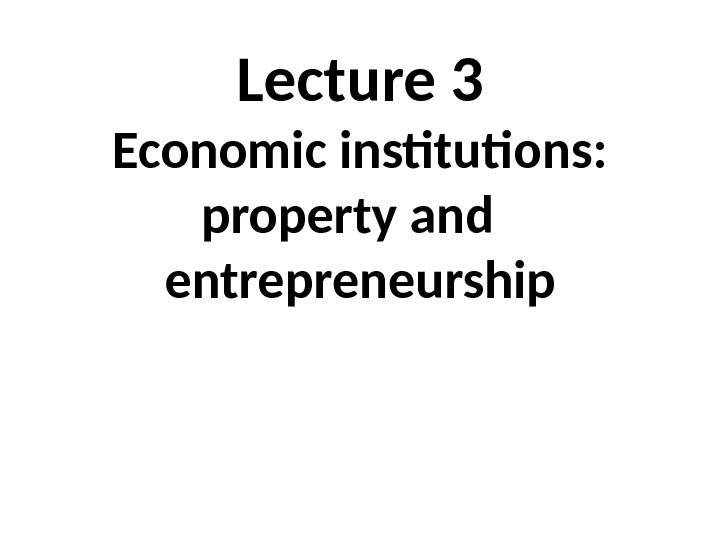
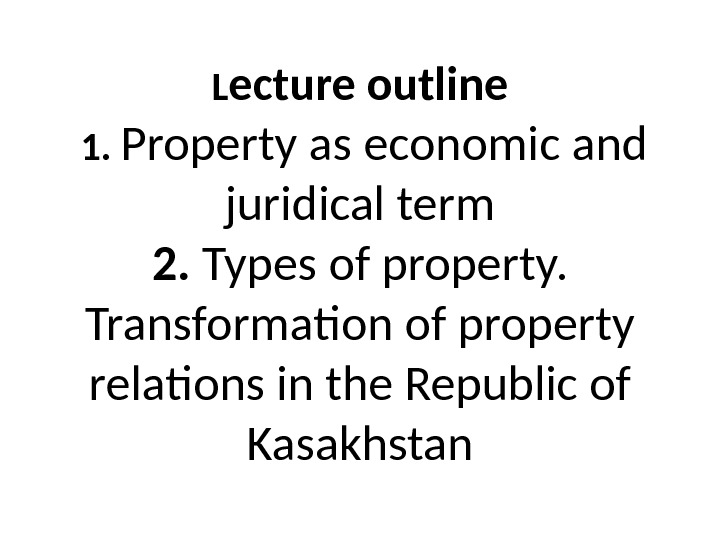
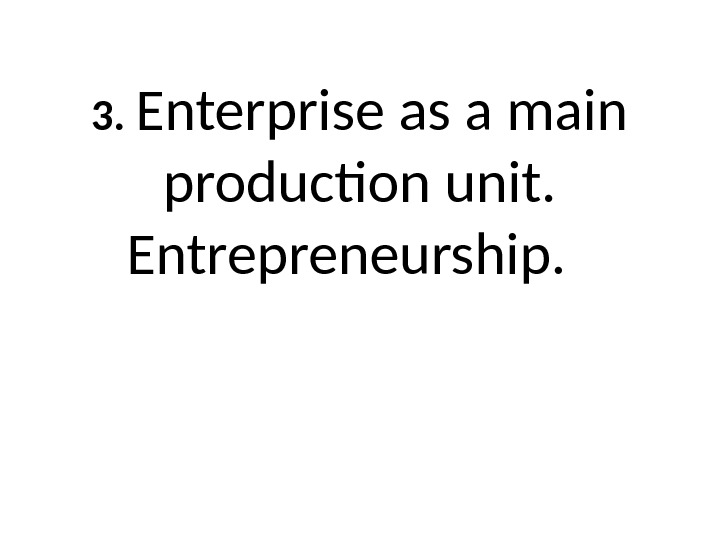



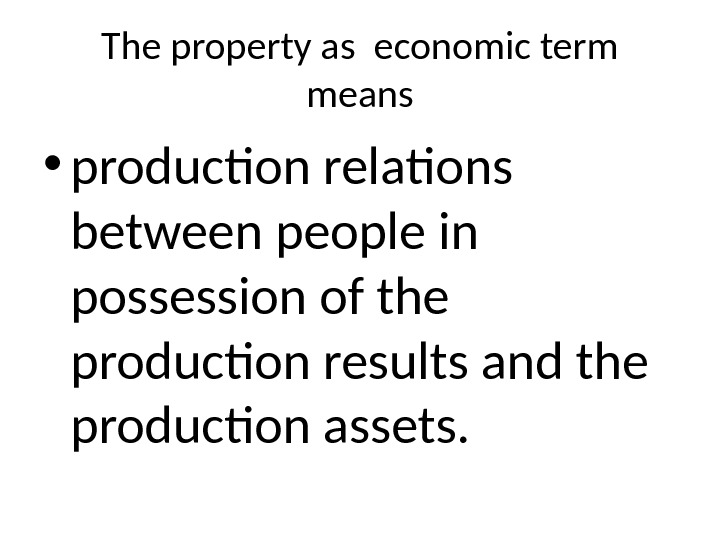
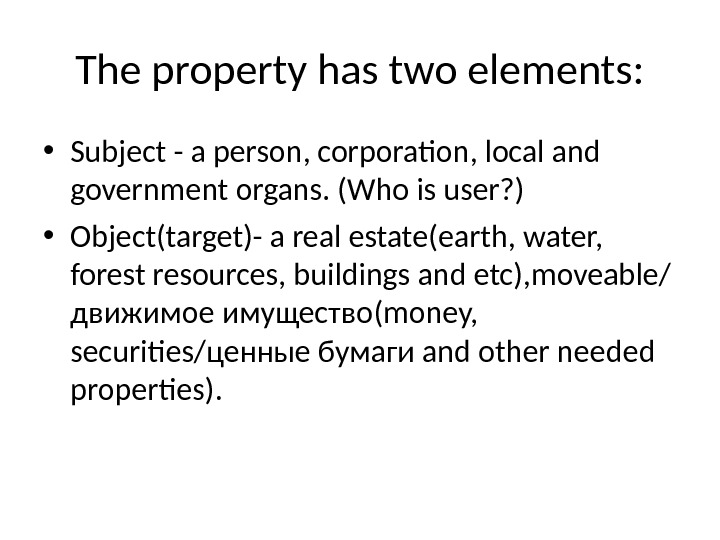
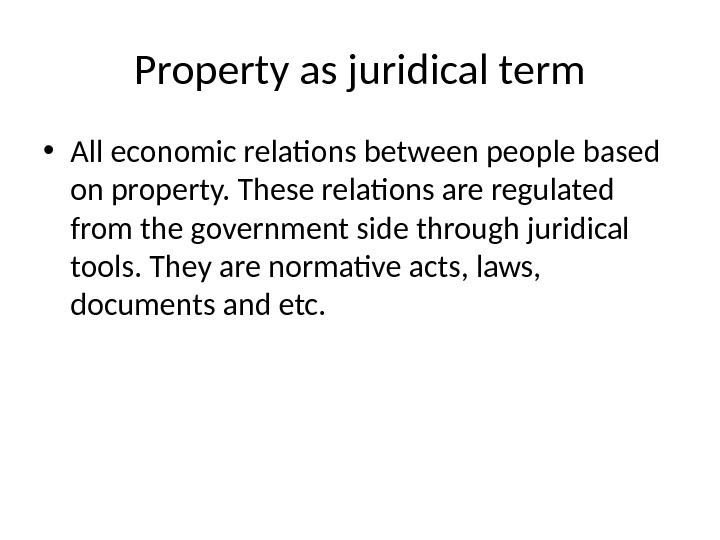
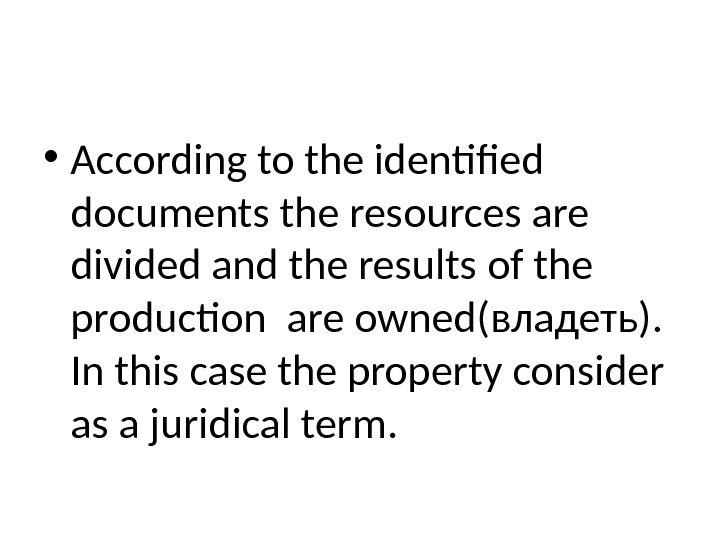
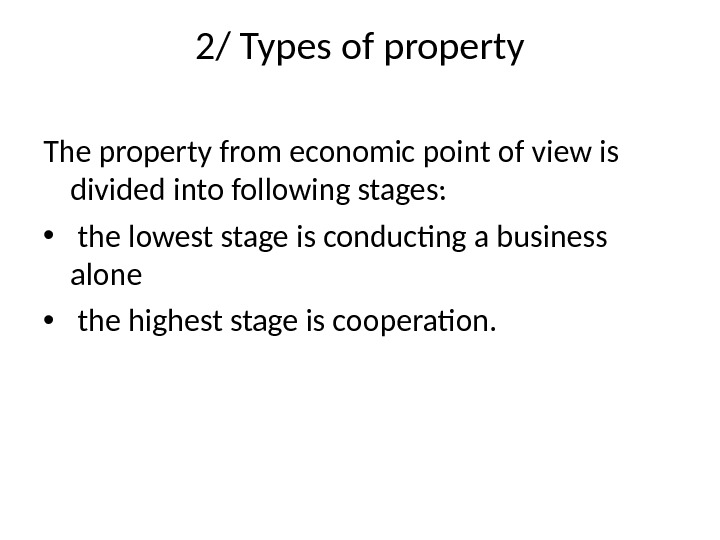
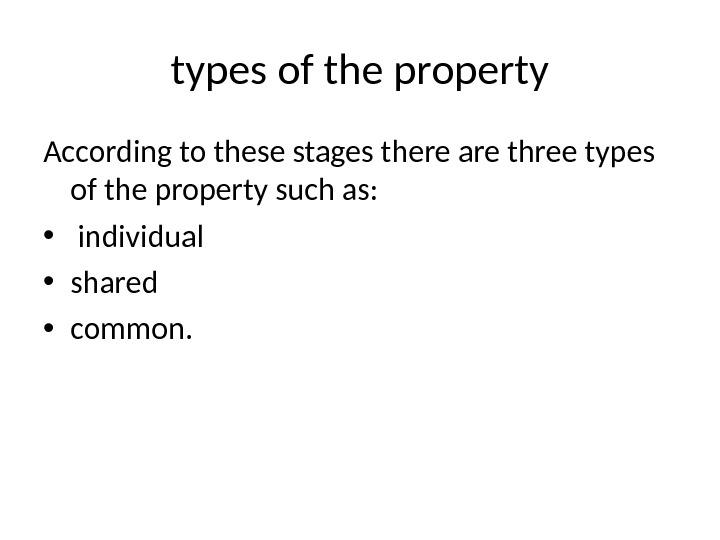
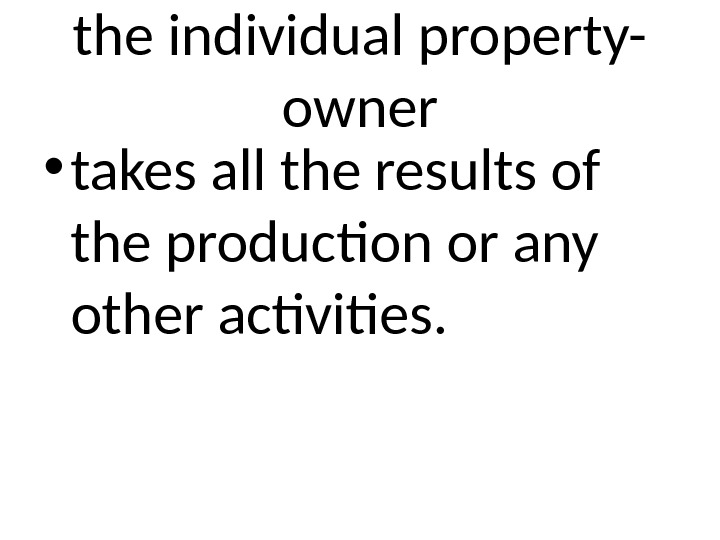
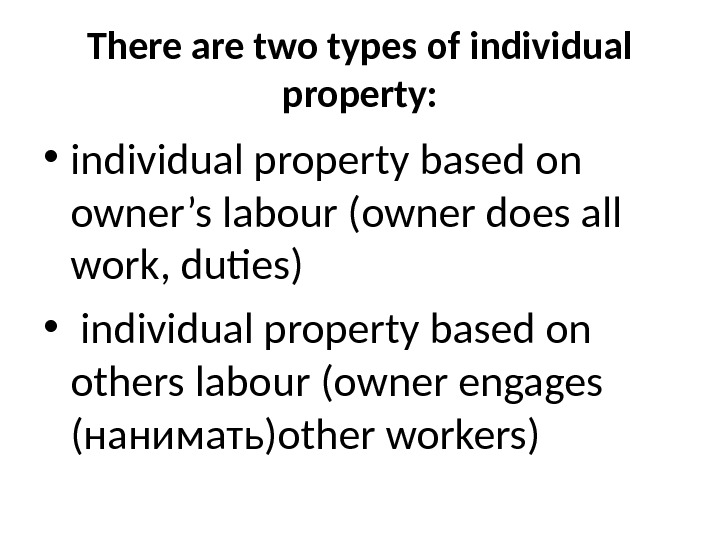
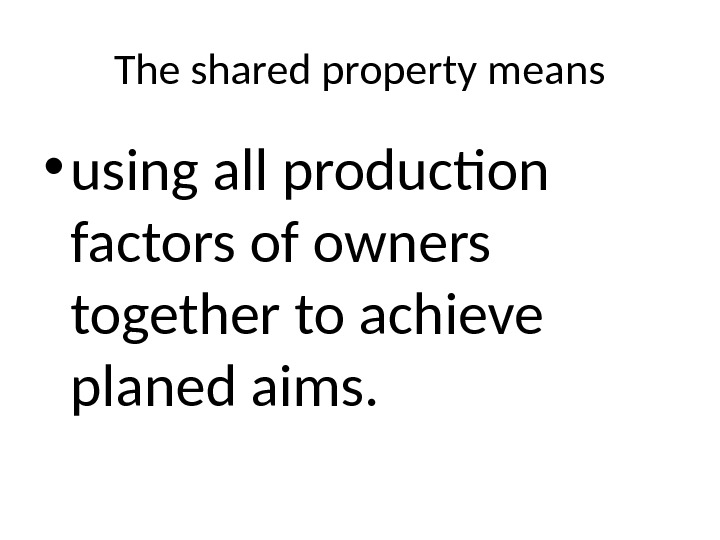
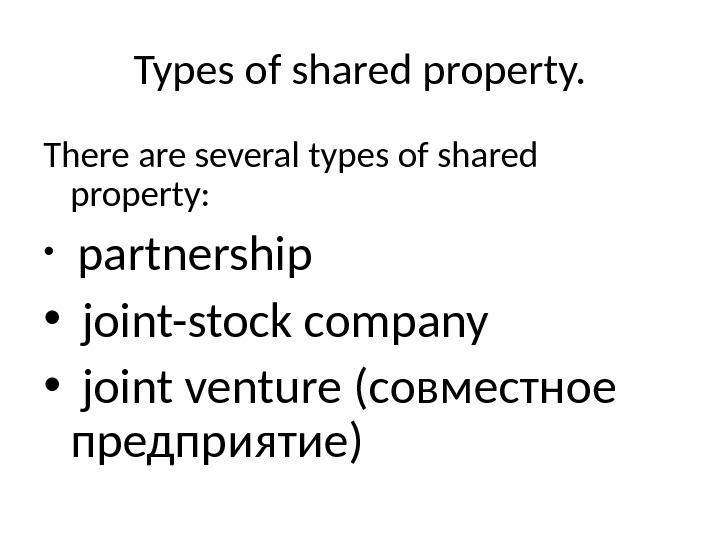
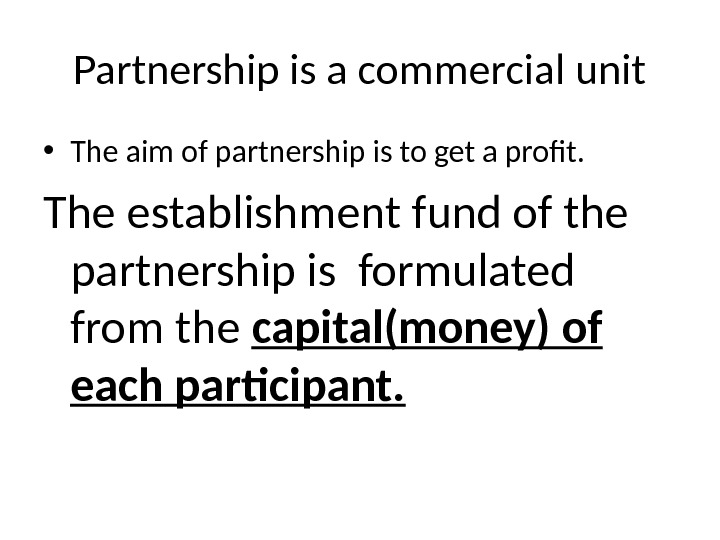

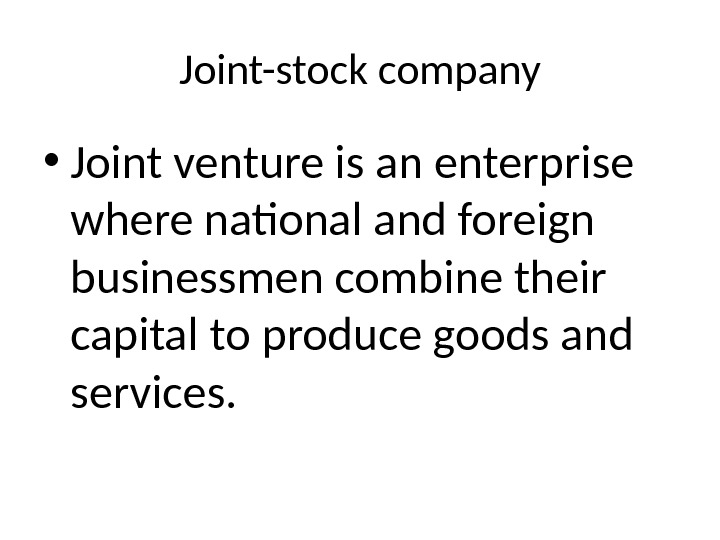
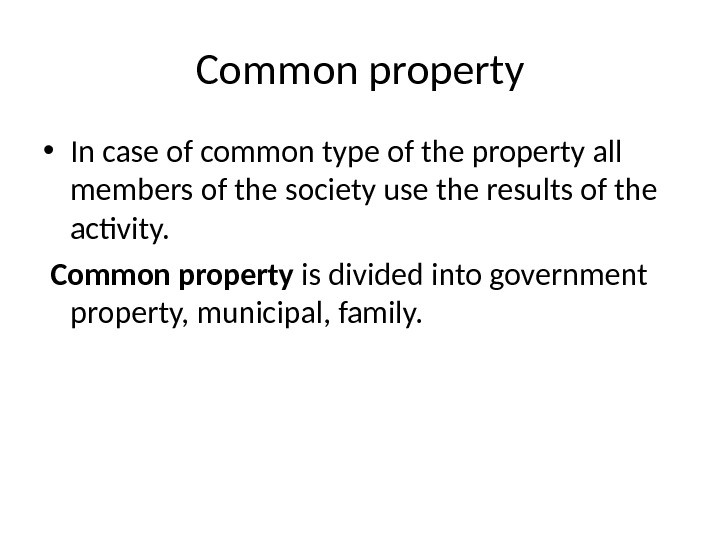
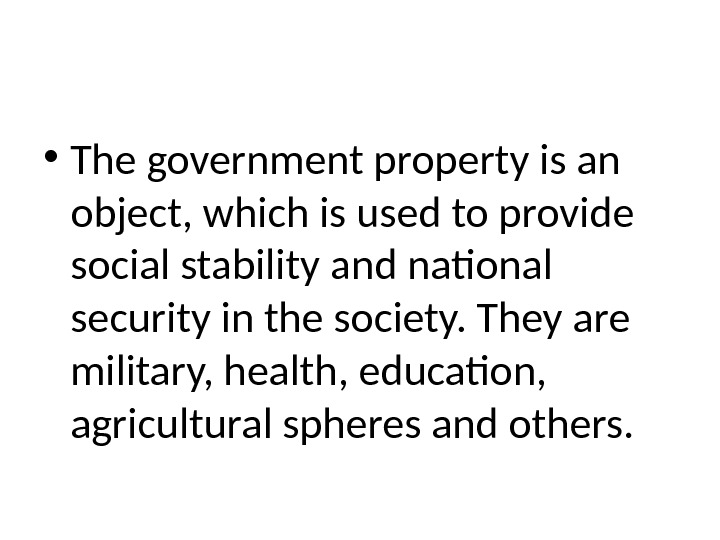
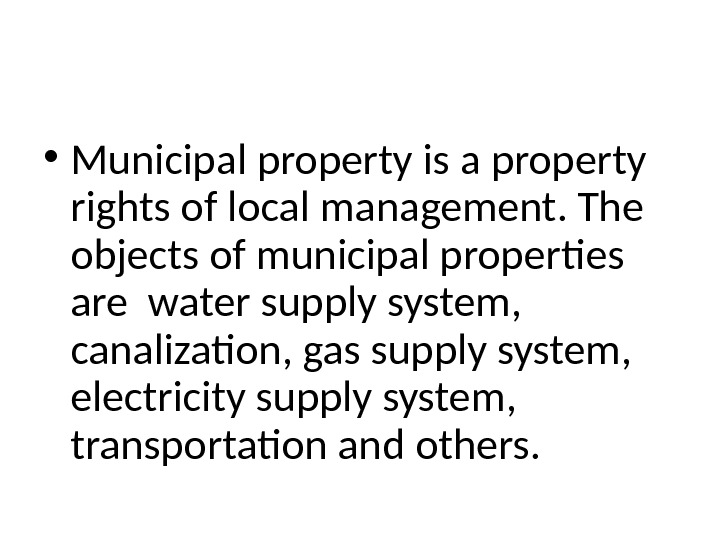
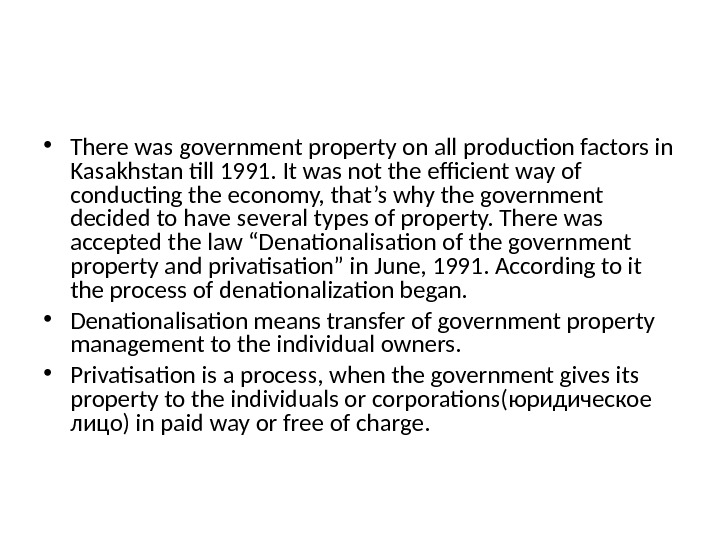
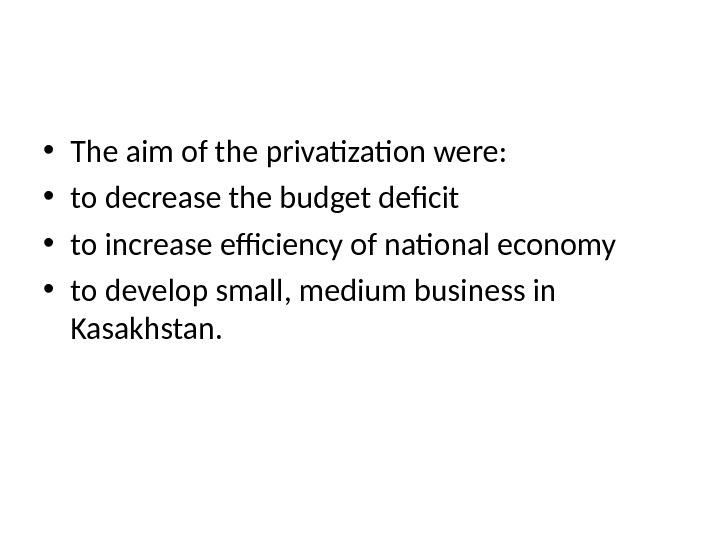
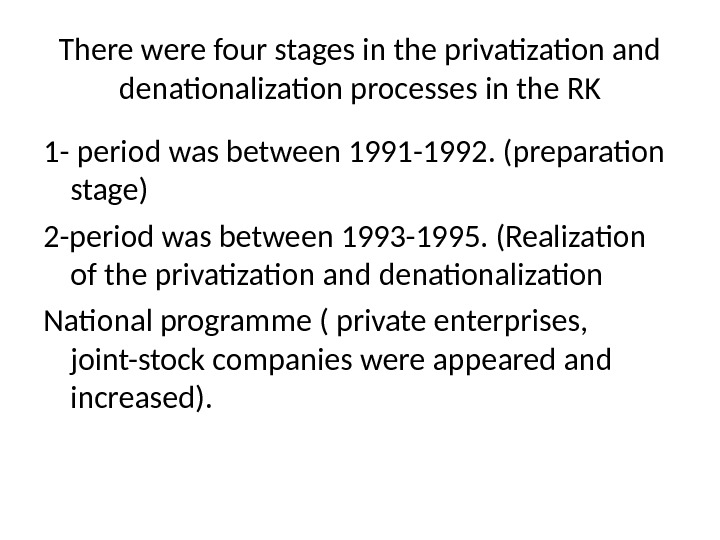
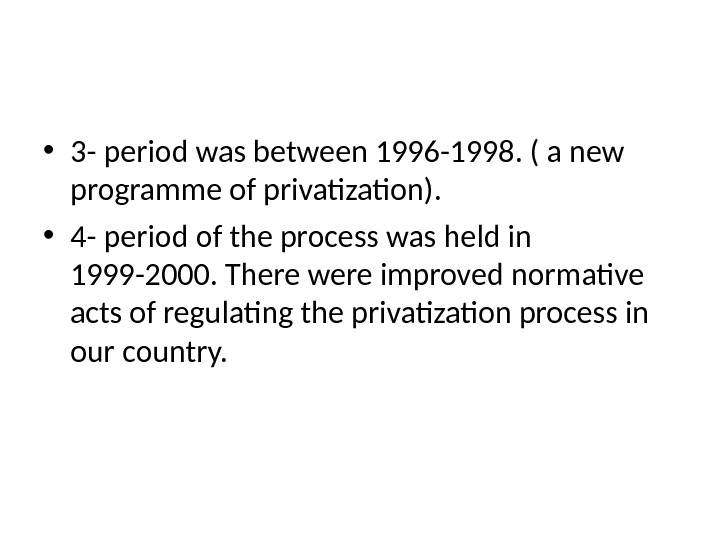
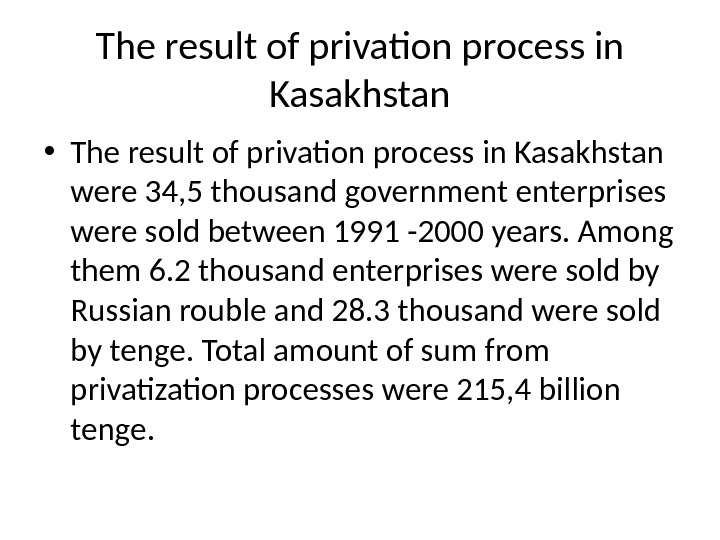

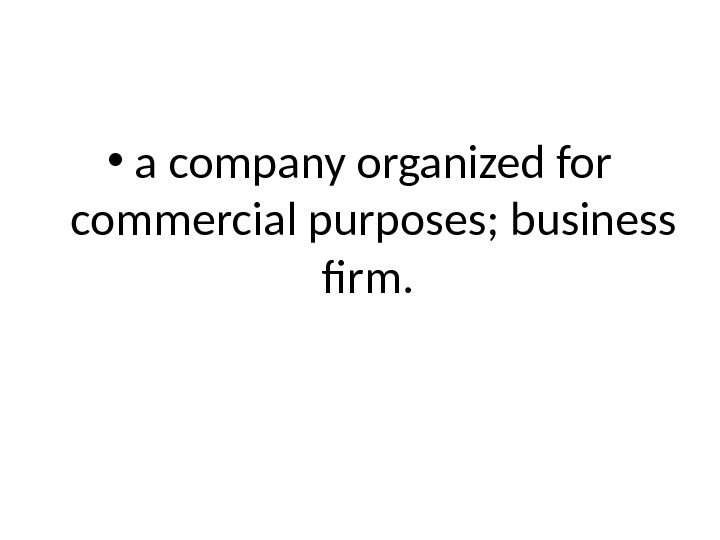
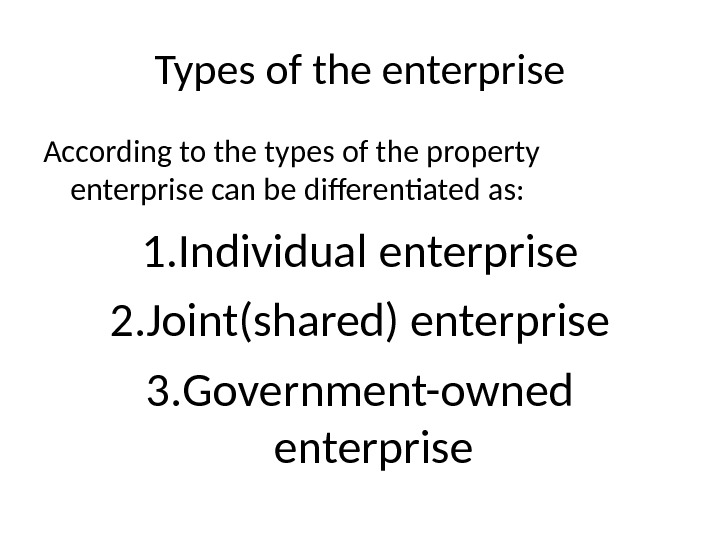
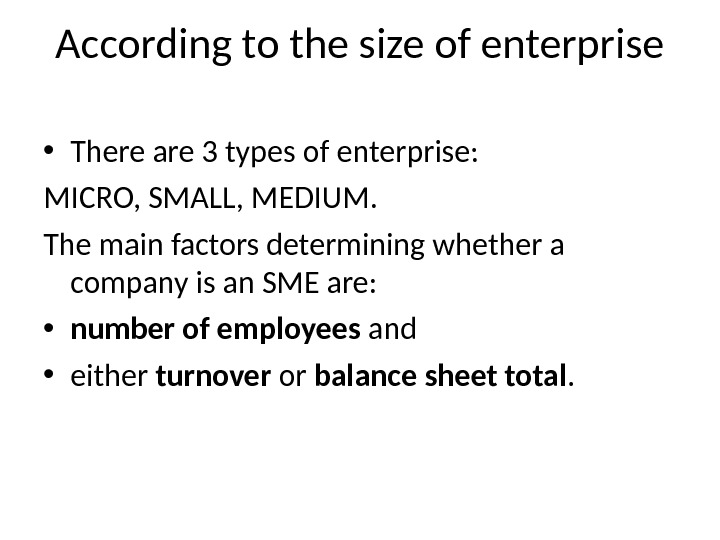
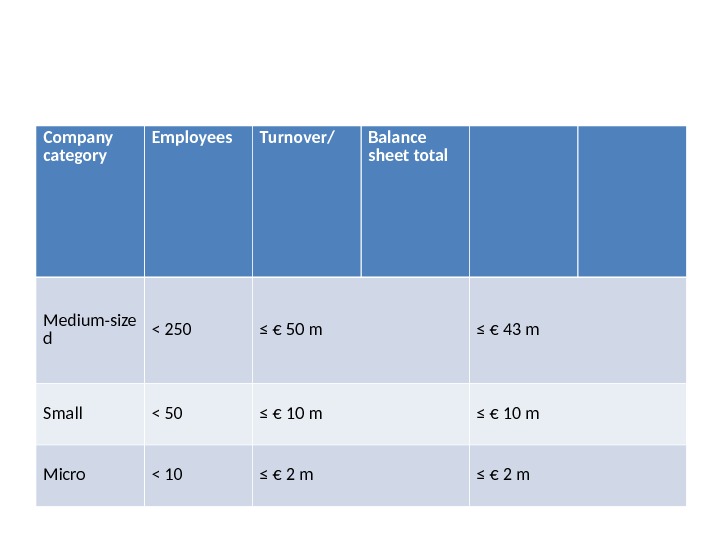
lecture_3_economic_institutions_property.ppt
- Размер: 206.5 Кб
- Количество слайдов: 32
Описание презентации Lecture 3 Economic institutions: property and по слайдам
 Lecture 3 Economic institutions: property and entrepreneurship
Lecture 3 Economic institutions: property and entrepreneurship
 L ecture outline 1. Property as economic and juridical term 2. Types of property. Transformation of property relations in the Republic of Kasakhstan
L ecture outline 1. Property as economic and juridical term 2. Types of property. Transformation of property relations in the Republic of Kasakhstan
 3. Enterprise as a main production unit. Entrepreneurship.
3. Enterprise as a main production unit. Entrepreneurship.
 The lecture aims are: • to understand the meaning and role of property in the economy • to differentiate the types of property
The lecture aims are: • to understand the meaning and role of property in the economy • to differentiate the types of property
 • To learn the role of entrepreneurship in development
• To learn the role of entrepreneurship in development
 Property is not a thing, • it is a relation between people concerning the thing. It means the relations between people in the production process of material and non material goods. (services)
Property is not a thing, • it is a relation between people concerning the thing. It means the relations between people in the production process of material and non material goods. (services)
 The property as economic term means • production relations between people in possession of the production results and the production assets.
The property as economic term means • production relations between people in possession of the production results and the production assets.
 The property has two elements: • Subject — a person, corporation, local and government organs. (Who is user? ) • Object(target)- a real estate(earth, water, forest resources, buildings and etc), moveable/ движимое имущество (money, securities/ ценные бумаги and other needed properties).
The property has two elements: • Subject — a person, corporation, local and government organs. (Who is user? ) • Object(target)- a real estate(earth, water, forest resources, buildings and etc), moveable/ движимое имущество (money, securities/ ценные бумаги and other needed properties).
 Property as juridical term • All economic relations between people based on property. These relations are regulated from the government side through juridical tools. They are normative acts, laws, documents and etc.
Property as juridical term • All economic relations between people based on property. These relations are regulated from the government side through juridical tools. They are normative acts, laws, documents and etc.
 • According to the identified documents the resources are divided and the results of the production are owned( владеть ). In this case the property consider as a juridical term.
• According to the identified documents the resources are divided and the results of the production are owned( владеть ). In this case the property consider as a juridical term.
 2/ Types of property The property from economic point of view is divided into following stages: • the lowest stage is conducting a business alone • the highest stage is cooperation.
2/ Types of property The property from economic point of view is divided into following stages: • the lowest stage is conducting a business alone • the highest stage is cooperation.
 types of the property According to these stages there are three types of the property such as: • individual • shared • common.
types of the property According to these stages there are three types of the property such as: • individual • shared • common.
 the individual property- owner • takes all the results of the production or any other activities.
the individual property- owner • takes all the results of the production or any other activities.
 There are two types of individual property: • individual property based on owner’s labour (owner does all work, duties) • individual property based on others labour (owner engages ( нанимать )other workers)
There are two types of individual property: • individual property based on owner’s labour (owner does all work, duties) • individual property based on others labour (owner engages ( нанимать )other workers)
 The shared property means • using all production factors of owners together to achieve planed aims.
The shared property means • using all production factors of owners together to achieve planed aims.
 Types of shared property. There are several types of shared property: • partnership • joint-stock company • joint venture (совместное предприятие)
Types of shared property. There are several types of shared property: • partnership • joint-stock company • joint venture (совместное предприятие)
 Partnership is a commercial unit • The aim of partnership is to get a profit. The establishment fund of the partnership is formulated from the capital(money) of each participant.
Partnership is a commercial unit • The aim of partnership is to get a profit. The establishment fund of the partnership is formulated from the capital(money) of each participant.
 Joint-stock company • It is a commercial company, where its establishment fund is divided into shares. Only joint-stock company has right to issue shares.
Joint-stock company • It is a commercial company, where its establishment fund is divided into shares. Only joint-stock company has right to issue shares.
 Joint-stock company • Joint venture is an enterprise where national and foreign businessmen combine their capital to produce goods and services.
Joint-stock company • Joint venture is an enterprise where national and foreign businessmen combine their capital to produce goods and services.
 Common property • In case of common type of the property all members of the society use the results of the activity. Common property is divided into government property, municipal, family.
Common property • In case of common type of the property all members of the society use the results of the activity. Common property is divided into government property, municipal, family.
 • The government property is an object, which is used to provide social stability and national security in the society. They are military, health, education, agricultural spheres and others.
• The government property is an object, which is used to provide social stability and national security in the society. They are military, health, education, agricultural spheres and others.
 • Municipal property is a property rights of local management. The objects of municipal properties are water supply system, canalization, gas supply system, electricity supply system, transportation and others.
• Municipal property is a property rights of local management. The objects of municipal properties are water supply system, canalization, gas supply system, electricity supply system, transportation and others.
 • There was government property on all production factors in Kasakhstan till 1991. It was not the efficient way of conducting the economy, that’s why the government decided to have several types of property. There was accepted the law “Denationalisation of the government property and privatisation” in June, 1991. According to it the process of denationalization began. • Denationalisation means transfer of government property management to the individual owners. • Privatisation is a process, when the government gives its property to the individuals or corporations( юридическое лицо ) in paid way or free of charge.
• There was government property on all production factors in Kasakhstan till 1991. It was not the efficient way of conducting the economy, that’s why the government decided to have several types of property. There was accepted the law “Denationalisation of the government property and privatisation” in June, 1991. According to it the process of denationalization began. • Denationalisation means transfer of government property management to the individual owners. • Privatisation is a process, when the government gives its property to the individuals or corporations( юридическое лицо ) in paid way or free of charge.
 • The aim of the privatization were: • to decrease the budget deficit • to increase efficiency of national economy • to develop small, medium business in Kasakhstan.
• The aim of the privatization were: • to decrease the budget deficit • to increase efficiency of national economy • to develop small, medium business in Kasakhstan.
 There were four stages in the privatization and denationalization processes in the RK 1 — period was between 1991 -1992. (preparation stage) 2 -period was between 1993 -1995. (Realization of the privatization and denationalization National programme ( private enterprises, joint-stock companies were appeared and increased).
There were four stages in the privatization and denationalization processes in the RK 1 — period was between 1991 -1992. (preparation stage) 2 -period was between 1993 -1995. (Realization of the privatization and denationalization National programme ( private enterprises, joint-stock companies were appeared and increased).
 • 3 — period was between 1996 -1998. ( a new programme of privatization). • 4 — period of the process was held in 1999 -2000. There were improved normative acts of regulating the privatization process in our country.
• 3 — period was between 1996 -1998. ( a new programme of privatization). • 4 — period of the process was held in 1999 -2000. There were improved normative acts of regulating the privatization process in our country.
 The result of privation process in Kasakhstan • The result of privation process in Kasakhstan were 34, 5 thousand government enterprises were sold between 1991 -2000 years. Among them 6. 2 thousand enterprises were sold by Russian rouble and 28. 3 thousand were sold by tenge. Total amount of sum from privatization processes were 215, 4 billion tenge.
The result of privation process in Kasakhstan • The result of privation process in Kasakhstan were 34, 5 thousand government enterprises were sold between 1991 -2000 years. Among them 6. 2 thousand enterprises were sold by Russian rouble and 28. 3 thousand were sold by tenge. Total amount of sum from privatization processes were 215, 4 billion tenge.
 Enterprise is an organisation that produces goods and services to be sold on the market
Enterprise is an organisation that produces goods and services to be sold on the market
 • a company organized for commercial purposes; business firm.
• a company organized for commercial purposes; business firm.
 Types of the enterprise According to the types of the property enterprise can be differentiated as: 1. Individual enterprise 2. Joint(shared) enterprise 3. Government-owned enterprise
Types of the enterprise According to the types of the property enterprise can be differentiated as: 1. Individual enterprise 2. Joint(shared) enterprise 3. Government-owned enterprise
 According to the size of enterprise • There are 3 types of enterprise: MICRO, SMALL, MEDIUM. The main factors determining whether a company is an SME are: • number of employees and • either turnover or balance sheet total.
According to the size of enterprise • There are 3 types of enterprise: MICRO, SMALL, MEDIUM. The main factors determining whether a company is an SME are: • number of employees and • either turnover or balance sheet total.
 Company category Employees Turnover/ Balance sheet total Medium-size d < 250 ≤ € 50 m ≤ € 43 m Small < 50 ≤ € 10 m Micro < 10 ≤ € 2 m
Company category Employees Turnover/ Balance sheet total Medium-size d < 250 ≤ € 50 m ≤ € 43 m Small < 50 ≤ € 10 m Micro < 10 ≤ € 2 m

